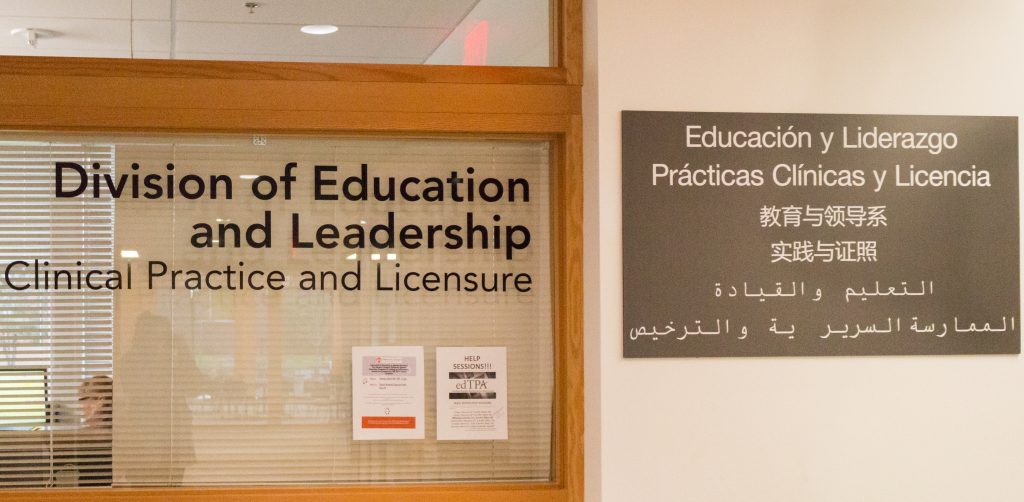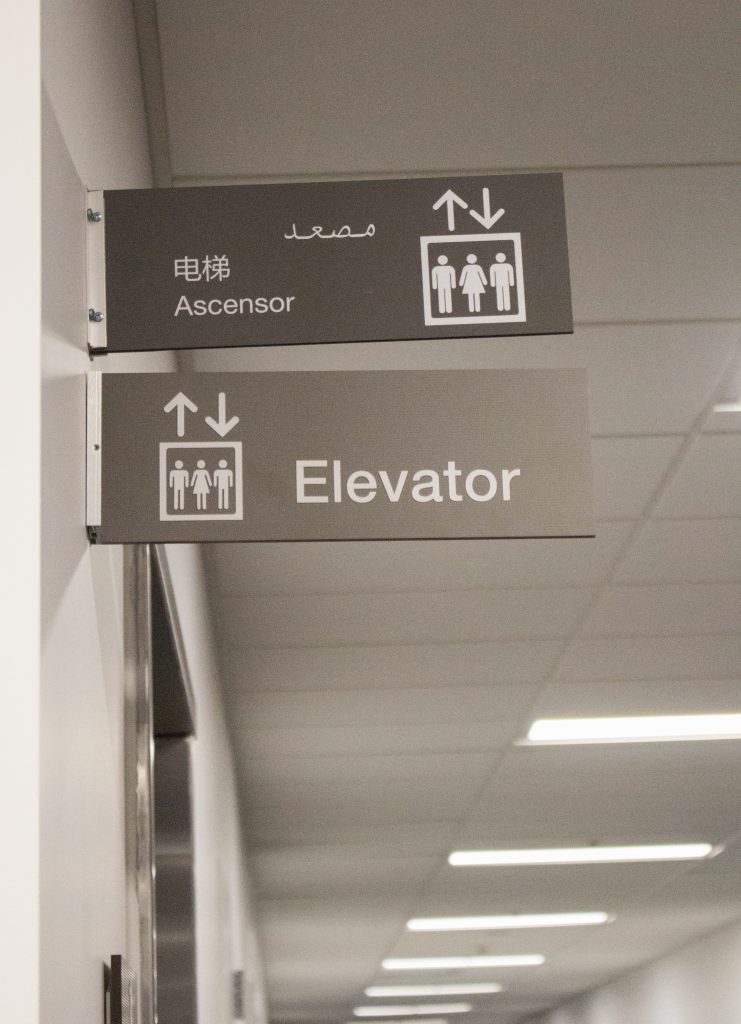
Bailey Thompson | News Editor
After a great deal of planning and hard work, the Richard Woodcock Education Center unveiled several multilingual signs on Feb. 14. All of the signs for elevators, lactation rooms and restrooms were replaced with new signage, along with the glass windows outside each department office in the building.
The idea for these signs was one that a number of people shared, but it was largely spearheaded by Dr. Rob Troyer, linguistics professor and the director of the Office of International Student Academic Support, and Dr. Mark Girod, Dean of the College of Education.
In talking with Dr. Troyer about how this project came about, he reflected on an honors linguistics class that he taught last year titled “Language in Place”. He explained how he was able to use the class as an opportunity to reach out to people on campus about the idea, and it was also how he learned that Dr. Girod had already been thinking the same thing he was.
 “It was really fortuitous that I had this class at the same time,” said Troyer. “I think that us inviting Mark to class and having (a) discussion motivated him to be a little more proactive about getting it done.”
“It was really fortuitous that I had this class at the same time,” said Troyer. “I think that us inviting Mark to class and having (a) discussion motivated him to be a little more proactive about getting it done.”
With both parties on the same page, Troyer stated that it wasn’t hard for Dr. Girod to put the plan in action, being the dean of the college.
“That’s one good thing about a small institution is when someone has an idea, and other people think it’s a good idea, it’s pretty easy to make it happen,” said Troyer.
When asked about the value he saw in having multilingual signage around campus, Troyer shared that there are two primary reasons to value these signs.
“One reason is access, and to me that’s the secondary reason. If people are using English as their second language, it may be really helpful for them to have their native language, so they can find their way around and know what things are,” said Troyer.
He also shared what he believes to be the most important reason: “It’s really symbolic … it represents — from the authority’s perspective — the valuing of other languages and an inclusion of multilingualism.”
With the multilingual signs that were put up in RWEC, Troyer shared that, while it was impractical to list every language that is spoken at Western, their goal was to include a number of the most widely spoken languages: Spanish, Chinese, Arabic, and some of the signs have ASL icons as well.
While Spanish has by far the largest group of speakers on campus, Troyer shared that these other languages also have a significant representation in the community.
“Out of 215 international students, currently about 60 percent are from China. And even though there are different languages in China, they use the same written language. So, anybody from China is going to be able to read written Chinese, whether they speak Mandarin or Cantonese or a different Chinese language,” said Troyer. He continued by stating that “about 20 percent of our international students are from Saudi Arabia.”
In reflecting on how he hopes that having more multilingual signage will make a difference at Western, Dr. Troyer had modest expectations.
“I don’t expect it to make a huge impact. It’s a subtle impact, and it’s a subtle reinforcement for the university’s mission for inclusion and multilingualism and globalization,” said Troyer. “It’s a way to make the face of the university match the goals that we have.”
Moving forward, Troyer shared that he has hopes of finding many other ways to incorporate multilingual signage at Western. He also has one other plan actively in the works: to have multilingual signage at the 2019 commencement in June. In addition, he intends to conduct research about the way that this new signage in RWEC is being perceived by different cultural groups around campus.
Contact the author at howlnews@wou.edu
Photo courtesy of Caity Healy

